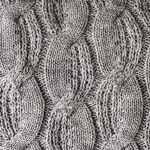The Viking Christian cross embodies a fascinating intersection of faith and culture. Emerging during the profound transition from paganism to Christianity in Scandinavia, these crosses reflect not only spiritual beliefs but also artistic expression. From intricate designs to their protective symbolism, Viking crosses offer a glimpse into a dynamic society grappling with new ideologies. Explore the significance of these artifacts and their role in shaping Viking identity during the transformative period of the 10th century.
Overview of the Viking Christian Cross
The Viking Age, spanning from 793 to 1066 AD, marked a pivotal era where the influence of Christianity began to permeate Norse societies. This period heralded significant cultural transformations, as traditional Viking pagan practices started to intertwine with emerging Christian beliefs. You can explore this fusion further on this page: get viking christian cross, where Viking crosses became emblematic of this intricate blend.
Also read : Shop viking christian crosses: embrace historical elegance
Viking paganism and Christianity often coexisted, evidenced by artifacts featuring both Thor’s hammer and the cross. These symbols represent a unique spiritual synergy as Vikings navigated diverse religious identities. This cross-culture interaction was not confined to religious artifacts but also influenced the broader spiritual landscape, leaving a lasting impact on Viking cultural identity.
The significance of the Viking cross extends beyond mere ornamentation. It embodies cultural heritage, symbolizing the enduring legacy of the Vikings’ gradual conversion to Christianity. By examining these crosses, we gain insight into the delicate and complex process of cultural integration and religious transformation that defined the Viking Age.
This might interest you : How to Style Chunky Footwear Without Overpowering Your UK Women’s Fashion Outfit?
Designs and Symbolism of the Viking Cross
Common Designs and Variations
The evolution of the cross in Viking culture highlights a fascinating meld of artistry and belief systems. Characterized by its distinct integration of Christianity in the Viking age, the Viking cross adopted several designs, often incorporating Nordic patterns and motifs. These designs not only captured the growing Christian influence but also resonated with traditional Viking artistry. Among the cross-shaped artifacts found in Viking settlements, intricate knotwork and interlaced patterns are common, illustrating the artistic flair and spiritual symbolism. These artifacts serve as testimony to the cross’s significance in Viking society, embodying a transition from paganism to Christian faith.
Symbolic Meanings and Iconography
Symbolism in Viking Christian art is deeply rooted in the interplay between old and new religious ideologies. The Viking cross came to symbolize not only the conversion to Christianity but also a preservation of Norse spiritual symbols. As such, Viking craftsmen cleverly infused pagan elements with Christian iconography, creating a unique visual language. Over time, these crosses became emblematic not just of faith, but of an era of cultural convergence and shifts in religious beliefs and practices. The cross’s dual symbolism underscores a period of significant theological transition, playing a pivotal role in the social and spiritual landscape of the Vikings.
Examples from Archaeological Finds and Artifacts
Historical artifacts and newly uncovered discoveries in Scandinavian areas deepen our understanding of the significance of the Viking cross. Archaeological discoveries of Viking crosses show their influence and manifestation in different mediums, from engraved runestones to intricately designed pendants. Items like the Birka and Aunslev crucifixes reflect the blending of Norse and Christian traditions, indicating the cross’s evolving role throughout the Viking era. As evident in these Viking age artifacts, each piece tells a story of cultural integration and religious adaptation, offering clues about how medieval Viking Christianity was practiced and symbolized during this transformative epoch.
The Role of Christianity in Viking Society
Integration of Christian Beliefs into Viking Traditions
The Viking Age witnessed a rich tapestry where Christian practices merged with traditional Norse beliefs. This integration paved the way for a unique spiritual landscape. Initially, many Vikings engaged in ‘prime-signing’, a provisional form of baptism symbolizing a tentative embrace of Christianity. This transition from paganism to Christianity was not abrupt; instead, it reflected a period of coexistence where Viking religious beliefs interacted with Christian customs. Rituals often involved both Christian prayers and appeals to Norse gods such as Óðinn, illustrating a blended spiritual quest.
Impact on Viking Social Structures and Practices
Christianity in the Viking Age significantly impacted social structures, introducing new moral codes and community practices. Churches began to sprout within Viking settlements, becoming centers of social life and religious conversion. The role of the church grew, influencing governance and daily life. As the Viking encounters with Christian Europe increased, so did the cultural integration of the cross in Viking society, visible in artifacts that merged Norse artistic motifs with Christian symbols.
Sagas and Legends Depicting the Intersection of Faiths
Viking storytelling during this era often highlighted the dialogue between old and new beliefs. Viking sagas involving the Christian faith captured the ideological shift and included elements of both traditional Viking lore and Christian teachings. Tales encapsulating Viking spiritual symbols alongside Christian narratives helped frame the evolving cultural identity, blending fables and historical narratives into a cohesive spiritual journey.











